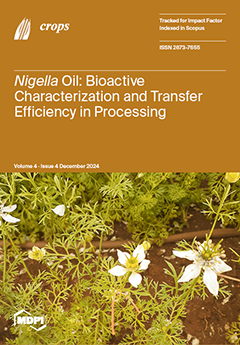The fundamental key to increase photosynthetic efficiency of crop plants lies in optimizing the light energy use efficiency. In our study, we used tomato to evaluate the allocation of absorbed light energy in young and mature leaves, and to estimate if the extent of photoinhibition and photoprotection can be affected by the leaf age. A reduced efficiency of the oxygen-evolving complex, in young leaves compared to mature ones, resulted in a donor-side photoinhibition, as judged from the significantly lower F
v/F
m ratio, in young leaves. The detected increased
1O
2 production in young leaves was probably due to a donor-side photoinhibition. The effective quantum yield of photosystem II (PSII) photochemistry (Φ
PSII), at low light intensity (LLI, 426 μmol photons m
−2 s
−1), was significantly lower in young compared to mature leaves. Moreover, the non-significant increase in non-photochemical energy loss in PSII (Φ
NPQ) could not counteract the decreased Φ
PSII, and as a result the non-regulated energy loss in PSII (Φ
NO) increased in young leaves, compared to mature ones. The significantly lower Φ
PSII in young leaves can be attributed to the increased reactive oxygen species (ROS) creation that diminished the efficiency of the open PSII reaction centers (F
v’/F
m’), but without having any impact on the fraction of the open reaction centers. The reduced excess excitation energy, in mature leaves compared to young ones, at LLI, also revealed an enhanced PSII efficiency of mature leaves. However, there was almost no difference in the light energy use efficiency between young and mature leaves at the high light intensity (HLI, 1000 μmol photons m
−2 s
−1). The ability of mature tomato leaves to constrain photoinhibition is possible related to an enhanced photosynthetic function and a better growth rate. We concluded that the light energy use efficiency in tomato leaves is influenced by both the leaf age and the light intensity. Furthermore, the degrees of photoinhibition and photoprotection are related to the leaf developmental stage.
Full article





